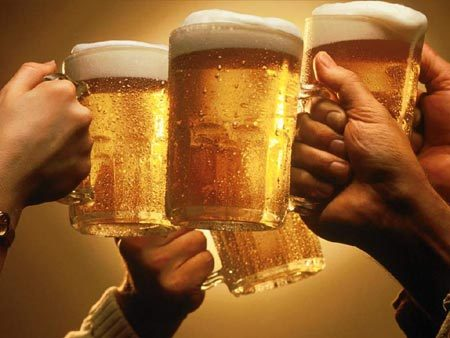 By Elizabeth GodsmarkAtlantic Publishing
By Elizabeth GodsmarkAtlantic Publishing
Part 1 of 4: Develop a Successful Beer Program
Beer is a major seller in most bars, clubs and liquor outlets; it accounts for a hefty percentage of sales. Draft beer is particularly popular. It can prove a lucrative area of any beverage operation, if you get it right. It is estimated that wastage, spillage, excess foam, overpouring, poor quality, theft, giveaways and other draft-beer-related problems can drain your operation of an amazing 20 percent of inventory. Never underestimate the scope for cost reductions in this area!
-
Promotions. Beer is a perishable product. As draft beer expires quickly, always consider discounting draft beer before bottled beer.
-
Computer-controlled draft beer technology. A good control system is essential. The best type of control is a flow meter attached to each tap. If your usage is over two kegs per week, then you could justify the installation of an electronic device that counts fractions of an ounce.
-
Foam head. Control the size of the head and really make an impact on cost reductions. A good head of foam is essential, but it is up to you to control the depth of the foam. For example, in a 16-ounce glass, a half-inch head of foam yields around 136 glasses of draft per keg, whereas a one-inch head yields up to 152 glasses per keg. Add up the difference! Train all bartenders to achieve one-inch heads of foam.
-
Stop selling beer in pitchers. Pitchers sell at a lower profit margin than beer by the glass. Although pitchers are a better deal for customers, they do little for your profitability. You're far better off selling four glasses of draft than one pitcher of beer.
This article is an excerpt from the Food Service Professional Guide to Controlling Liquor Wine & Beverage Costs, authored by Elizabeth Godsmark, published by Atlantic Publishing Company. This excerpt has been reprinted with permission of the publisher. To purchase this book go to:
Atlantic Publishing Company
Amazon.com
Topics:
Draft Beer,
beer inventory,
Beer stock
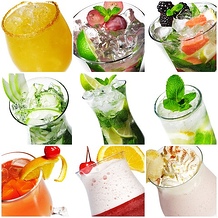 By Elizabeth GodsmarkAtlantic Publishing DRINK MIXESJust because mixes aren't a drink's main ingredients, one shouldn't ignore their impact upon your operation's profitability. There is considerable scope for trimming costs in this area. Despite being sold in small portions, drink mixes have a high overall sales volume; it is also predictable and consistent. Review the range of drink mixes used in your establishment. It all helps to reduce costs.
By Elizabeth GodsmarkAtlantic Publishing DRINK MIXESJust because mixes aren't a drink's main ingredients, one shouldn't ignore their impact upon your operation's profitability. There is considerable scope for trimming costs in this area. Despite being sold in small portions, drink mixes have a high overall sales volume; it is also predictable and consistent. Review the range of drink mixes used in your establishment. It all helps to reduce costs.
-
Fresh orange juice. It is worth investing in a good commercial juicer for orange juice. A handy tip is to rinse oranges under hot water before placing them in the juicer - the juice yield will be higher.
-
From scratch drink mixes. Preparing a whole range of drink mixes from scratch is too time-consuming, and all too often, results in inconsistent quality. You're better off buying ready-made mixes. Test samples of mixes before making a decision. Prepared mixes can vary considerably in taste and quality.
-
Cut garnish costs. Your choice of garnishes to accompany drink mixes can, quite literally, eat into your profits. Bartenders are notorious for nibbling olives, cherries, pineapple wedges, chocolate shavings, peppermint sticks, pretzels, etc. Remove temptation. Store garnishes in airtight containers in a cooler, away from temptation. Also, establish par levels for fruit garnishes and only prepare enough for one shift.
-
Unusual juices. Use single-portion 6-ounce cans for less-frequently-served juices. Trade higher cost for reduced wastage, time saving and convenience.
BOOST PROFITS BY CHOOSING THE RIGHT DRINK RECIPES
The recipes you choose to feature on your drinks menu must do more than satisfy customer requirements. Plan carefully; a lot of thought needs to go also into keeping costs down, while at the same time maintaining a fine reputation for quality and imagination. This is no mean task, but the following simple suggestions may help:
-
Communicate your recipe preparation techniques. Add a brief description about your unique preparation techniques underneath each recipe on the drinks menu. Tempt your customers to try "something different." The secret lies in your method of communication, rather than in the actual recipes themselves.
- Highballs. Although highballs can be served in a variety of different-sized glasses, the ideal size for maximum efficiency and controlling costs is a 9-ounce glass. It accommodates the exact proportions for a standard highball recipe. The glass looks full to capacity; the customer is happy. Also, you know that the portions of ingredients are correct.
- Recipes on napkins. Dare to be different. Get some recipes you want to promote printed on napkins. It's different, and it's a good marketing tool. It also channels customers into ordering the recipes that you want them to buy. Choose the "special" recipes on the basis of higher profit margins, but promote them as "added value" recipes.
- Mobile mini-bar. As well as serving recipe drinks from the main bar, introduce a mini-bar on wheels. Get a bartender to wheel it around, selling "taster recipes" at promotional prices. The spontaneity of this approach is excellent for generating extra income.
This article is an excerpt from the Food Service Professional Guide to Controlling Liquor Wine & Beverage Costs, authored by Elizabeth Godsmark, published by Atlantic Publishing Company. This excerpt has been reprinted with permission of the publisher. To purchase this book go to:
Atlantic Publishing Company
Amazon.com
Topics:
Bar Management,
drink recipe,
Drink Recipes
 By Elizabeth GodsmarkAtlantic Publishing
By Elizabeth GodsmarkAtlantic Publishing
Well liquors are probably the most important products in any successful beverage operation. Approximately 50 percent of a typical bar's liquor depletion comes from well liquor. Therefore, how you select, handle and sell these liquors is crucial to the long-term sustainability of your operation. Bear in mind the following:
- Avoid supplier "come-ons." Suppliers are always keen to off-load excess stocks of well liquor. Only succumb if you think that you can easily sell the extra volume at a significant profit.
- Quality. Consistency and quality of well liquors varies considerably. Two factors are really important when choosing which well liquors to sell: quality and cost. Select well liquors that exactly match the quality expectations of your clientele. If your customers are picky, you cannot skimp on quality. It would cost you too dearly.
- Sequence. The traditional liquor sequence (bourbon, whiskey, gin, vodka, rum, tequila), where dark liquors are separated from light liquors, isn't the most cost-effective method of sequencing your well liquor. Try the more modern approach. Alternate light and dark liquors, e.g., gin, bourbon, vodka, scotch, etc. It reduces costly wastage. Bartenders are less likely to mistake one well liquor for another.
- Well liquor grade. Match the grade of well liquor to your type of establishment. No need for costly overkill. For example, exclusive clubs may have no choice but to sell predominantly premium brands. Less image-conscious outlets can reduce costs by selling semi-premium or pouring brands.
This article is an excerpt from the Food Service Professional Guide to Controlling Liquor Wine & Beverage Costs, authored by Elizabeth Godsmark, published by Atlantic Publishing Company. This excerpt has been reprinted with permission of the publisher. To purchase this book go to:
Atlantic Publishing Company
Amazon.com
Topics:
liquor inventory,
well liquor,
liquor products
By Elizabeth GodsmarkAtlantic Publishing 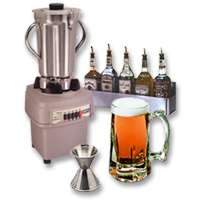
A lot depends on your location. Some states have an almost monopolistic control over alcohol distribution; other states operate by licensing wholesalers. You need to familiarize yourself with county and local laws. They vary considerably from state to state. So, where do you start?
- Source a supplier. Take a look at your local beverage trade publications or Yellow Pages for a list of suppliers and wholesalers. The chances are you'll need to deal with several suppliers in order to get the full range of beverages required by your establishment.
- Service.As well as competitive prices, also look for exceptional service from your suppliers. For example, do they offer "emergency" deliveries at no extra cost to their regular customers? Time out to collect extra stock involves you in extra expense.
- Visit warehouses. Before deciding, visit a few different warehouses to see how they operate. More important, do they handle their stock with care? Bear in mind that returning faulty or poor merchandise can be time-consuming and expensive. Also, customer dissatisfaction is hard to quantify.
- Beware of hidden charges for minimum orders. Choose only a supplier that does not penalize you for minimum orders.
- Pool buying. If pool buying is legal in your state, choose a supplier that will give you the biggest savings. Negotiate, but don't compromise. Get a written quotation first.
This article is an excerpt from the Food Service Professional Guide to Controlling Liquor Wine & Beverage Costs, authored by Elizabeth Godsmark, published by Atlantic Publishing Company. This excerpt has been reprinted with permission of the publisher. To purchase this book go to:
Atlantic Publishing Company
Amazon.com
Topics:
Bar inventory,
bar supplies,
hotel supplies
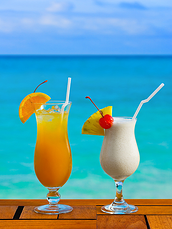 By Elizabeth GodsmarkAtlantic Publishing
By Elizabeth GodsmarkAtlantic Publishing
This sector of the beverage industry, known in the trade as NABs, needs to be taken very seriously if you want to cash in on current drinking trends. More customers today (often affluent, young, career-oriented clientele with plenty of disposable income) are choosing to drink NABs. Health issues, stricter DWI laws, and maybe even image are influencing their decisions to turn to NABs. The fact remains: this trend can mean big bucks. Tap into the possibilities:
- Promotions. Which NABs are consistently popular in your establishment? Buy bulk and sell on promotion. Publicize offers that your customers just cannot resist. Use a large chalkboard, or place "in-your-face" table tents on tables and at the bar.
- Specialize. Don't bother with expensive market research. Consult your regular customers. Ask them what they'd like to see on the menu. Decide on a few in-house specialties. Profits will increase noticeably, as margins for NABs are generally higher than for alcoholic beverages.
- Bottled water. This is no passing fad. Both in the dining room and at the bar, people are choosing to alternate alcoholic drinks with bottled water. Shelf dates tend to be generous (particularly for still, noncarbonated waters), so cash in: buy in bulk for big savings.
- Added value.Serve NABs in sophisticated, unusual glasses that scream "quality"! Customers will happily pay that little bit extra for a "wow" experience.
- Don't price too low. A word of warning. To make the most of this burgeoning area of the drinks market, keep your prices in line with your establishment's other alcoholic beverages. If NABs are priced too low, bartenders will be reluctant to promote them, and customers will think they're nothing special.
This article is an excerpt from the Food Service Professional Guide to Controlling Liquor Wine & Beverage Costs, authored by Elizabeth Godsmark, published by Atlantic Publishing Company. This excerpt has been reprinted with permission of the publisher. To purchase this book go to:
Atlantic Publishing Company
Amazon.com
Topics:
Bar inventory,
alcohol,
Bar trends,
Bar drinks
By Chris ParryAtlantic Publishing
Vending Machines Pay!
Your kitchen can't stay open all night long and when it closes, it will do you well to have a means for your customers to fill a hole in their stomachs. A vending machine will not only do just that, it can also supply everything from condoms to cologne, antacids to breath mints. In fact, if there's a need for it, you can bet there's a vending machine to fill that need. Check your local yellow pages for vending suppliers near you.
- Respond to customer requirements. People go to bars for three reasons: to drink, have fun and meet people. That last reason might make you want to consider fitting your club with a condom machine. One of these machines in the women's and men's restrooms can bring you a great source of income, especially on busy nights. Offering other bathroom essentials, like cologne, lip balm, women's essentials and aspirin, can add further profitability to your operation.
- Snacks.A selection of snack products can be another great earner, not just inside your bar but also outside. Chocolates, candy, chips, mints, cookies, granola bars; these snacks will keep your patrons going all night long without bothering your bar staff - or tempting them to enjoy the snacks themselves. Also, if you have some machines positioned outside your venue, they will continue selling for you even when the bar is closed!
- Water. In a nightclub, charging for glasses of water can be seen as profiteering by your customers. However, installing a bottled-water- vending machine can not only save your bartenders the time spent pouring out free water, it can also bring you in a hefty profit when patrons start to work up a sweat on the dance floor. Initiate a "bottled water only" rule when the dance floor is in operation and have your bartenders point to the vending machine whenever they're asked for water. Or have a selection of bottled waters available from the bar. You might even consider a special menu just for bottled waters. Your customers won't mind paying for it so much if they're getting the bottled product.
- Pay phones. It seems everyone these days has a cell phone, but there's still a huge need for the good old payphone. Incorporating phone card vending machines alongside a bank of pay phones is a way to double your profits on your customers' phone habits. Have them give you quarters for local calls or ten bucks for long distance. If you give your patrons options, they'll invariably choose one.
This article is an excerpt from the Food Service Professional Guide to Bar & Beverage Operation, authored by Chris Parry, published by Atlantic Publishing Company. This excerpt has been reprinted with permission of the publisher. To purchase this book go to:
Atlantic Publishing Company
Amazon.com
Topics:
bar,
NightClub Management,
bar business,
Bar Management,
Bar products,
Increasing Profits
By Chris ParryAtlantic Publishing
Upsizing is Essential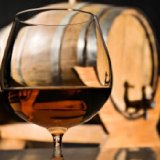
When you go to the movies, quite often you can buy a double-sized popcorn for only $0.75 more than the $3.50 regular size. This would seem to be an astonishing bonus for the customer, so why does the cinema operator push this "up-sizing" so hard? Quite simply, because they're selling about $0.04 worth of popcorn for that extra $0.75. That second portion might not bring as large a profit margin as the first, but it's still profit. Your drinks run the same way - if you can get another buck out of a customer selling a drink that costs you $0.45 to prepare, it's worth doing.
-
Consider the cost per ounce of your well spirits. Let's assume you're using El Cheapo brand tequila at a base cost of $7.54 a liter. That would mean that an ounce of that spirit is costing your establishment $0.22, while a more-expensive brand of tequila, let's say Cuervo for the sake of this example, might come at a base cost of $14 per liter, or $0.41 per shot. Common thinking might lead you to say that by using the cheaper tequila you're saving yourself $0.19 on every drink sold. But, if you consider the alternative of up-selling the more expensive spirit for an extra $0.80 or so, you're actually making an extra $0.61 profit on every up-sized drink.
-
Offer your customers a discount to spend more than they planned. This works in other areas, too. Turning a single into a double for an additional dollar, or selling half-price burgers with every shot of a specific brand of spirit, brings you more money per order, while bringing your customers added value. Your profit margin might not be as high, but you'll be extracting more money from your customers than they might otherwise have spent - a definite win-win.
-
Up-selling. Most bar customers will bring out more money than they initially want to spend -just in case - especially those that don't have easy access to it through ATM machines and credit cards, so it's imperative that your staff don't let those customers walk out the door having spent less than they planned. Incentives for up-selling are commonplace in the theater and fast-food industries, so why not offer your staff an incentive to up-sell and watch your better staff earn a few extra dollars while earning you hundreds?
-
Incentives. For example, if a member of your staff engages someone in conversation and discovers they're looking for somewhere to hold a private function, birthday party, girls' night out - any large gathering of people - there's certainly no harm in making it worth their while to bring that prospective client to you. Twenty dollars here, $50 there - even a percentage of the bar take - if you offer the incentives, you'll be surprised how far people will go to bring you new business.
This article is an excerpt from the Food Service Professional Guide to Bar & Beverage Operation, authored by Chris Parry, published by Atlantic Publishing Company. This excerpt has been reprinted with permission of the publisher. To purchase this book go to:
Atlantic Publishing Company
Amazon.com
Topics:
NightClub Management,
bar business,
Bar drinks,
Bar Management,
Liquor cost,
alcohol cost
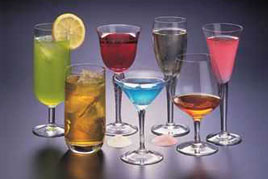 By Chris ParryAtlantic Publishing
By Chris ParryAtlantic Publishing
Structuring a Price List
Guesswork just won't do in today's corporate world. Figuring that if your scotch costs you $14 a bottle you can sell a shot for $3, is just a little hit-and-miss when you take in all the other potential costs, like rent, insurance and wages, that your establishment has to cover over the course of a month. It's possible you might be able to charge less than $3, but it's also possible you should be charging way more. Take these factors into account when making your next price list adjustment:
- Market positioning. Take a look around at what your competitors are charging. Figure out if you need to undercut them or match their level. Does your establishment give added value enough to increase your prices and still draw a good crowd? Are you a level above them in terms of services and product? Are you evenly matched? Are you looking for a more "low rent" crowd? Price accordingly.
- The competition. They're not always right, but if they've been around a while, your direct competitors probably have a good gauge of what your local customers are prepared to pay for a drink. Take the time to look around and take particular note of any specials they offer on certain nights.
- Customer demographics. Are your patrons blue-collar workers? Are they white-collar? Do they have families to get home to or are they likely to stay all night and spend every penny? Are they young adults or senior citizens? These all impact what you can charge without losing clientele, and you should have the information already from your market research.
- Embrace simplicity. It's far better for your customers and staff to have to deal with a simple pricing structure as opposed to forcing them to break their brains over an intricate maze of differently priced products. Set across- the-board levels of prices; for example, well spirits might cost $3, middle-shelf $3.50 and top-shelf $4. Of course there's always going to be the occasional variation, but for the most part, a three-tiered system gives you flexibility in pricing without your staff continually needing to check a price list or hand out handfuls of change.
- Include tax in your pricing. There's nothing worse than getting $0.84 change from a five- dollar bill on every drink you buy and getting home with a pocket full of silver and copper. If you're going to set your prices at a round level, include the tax in that price so you can use price levels to your advantage. If your alcohol tax rate is 10 percent, the non-tax price for a shot that costs your patrons $3.50 would be $3.18 ($3.18 plus tax of $0.32 equals $3.49). Let your accountant do the math, not your bar staff. Sales tax is a complicated matter that varies dramatically from state to state. Prior to establishing the net price inclusive of tax, discuss the issue with your accountant and state Department of Revenue. Don't find out later in a five-year audit that you've been calculating the tax incorrectly.
This article is an excerpt from the Food Service Professional Guide to Bar & Beverage Operation, authored by Chris Parry, published by Atlantic Publishing Company. This excerpt has been reprinted with permission of the publisher. To purchase this book go to:
Atlantic Publishing Company
Amazon.com
Topics:
bar business,
Bar drinks,
Bar Management,
Liquor cost,
alcohol cost,
drink recipe
By Chris ParryAtlantic Publishing
Part 2 of 2: Protecting Your Profits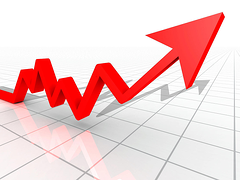
Your profit margin, like that of any business, is fragile at best. You can sit down with a calculator and try to calculate the exact percentage you'd like to see on each drink. But in practice, a little splash too much here and there can see you falling perilously close to a loss. Follow these rules and you'll be that much more likely to see your bottom line behind the bar match that of your balance sheet estimations.
- Watch what your staff pours. Regularly measure what they consider an ounce. If just one bartender overpours 40 shots a night by 25 percent, you've given away ten drinks for nothing. This kind of waste can get very expensive, especially if you have a large bar staff and they're all pouring more than 40 drinks per night.
- Have your staff keep all the liquor in the glass. Many staff members get lazy as the night wears on, and inevitably they'll start taking shortcuts. One shortcut many take is to line up three or four glasses and pour one after the other in a straight line without raising the head of the bottle. While this may save them a second or two, it also pours a lot of your product directly onto the bar surface, not to mention down the sides of the glasses that your customers are about to put in their hands. It also means your customers are far less likely to get what they've paid for. Don't let it happen.
- There are alternatives to free-pouring. While free-pouring certainly is more stylish and perhaps faster than measured pouring, it is also definitely far from accurate. As bar staff generally tend to err on the side of caution, they usually pour too much rather than too little. Control-pour spouts, such as Posi-Pour spouts, are a little more expensive than the usual free-pour, but they give a far more accurate pour without the need for clunky overhead systems or sophisticated electronics - and at much the same speed as free-pourers.
- Liquor control system. If you really want to keep an eye on your outgoings, a liquor inventory control system may be your answer. The price of setting these systems up, and maintaining them, can be significant. Then again, you get what you pay for.
This article is an excerpt from the Food Service Professional Guide to Bar & Beverage Operation, authored by Chris Parry, published by Atlantic Publishing Company. This excerpt has been reprinted with permission of the publisher. To purchase this book go to:
Atlantic Publishing Company
Amazon.com
Topics:
Bar inventory,
managing liquor inventory cost,
bar business,
profit,
Bar Management,
alcohol cost,
bar control,
controling costs
 By Chris ParryAtlantic Publishing
By Chris ParryAtlantic Publishing
Part 1 of 2: The Profits
What does each drink cost you?Without profits, you're out of business, but so many managers see profits as what the owners worry about. Your job is as much to grow profits as to sustain them, so consider putting a little elbow grease into the growth of your establishment by learning about the nickel and dime stuff. A good bar operator needs to wear a number of hats, but the four most important are that of promoter, psychologist, host and accountant. This isn't to say that you need to be of professional standard in all four areas, but you do need a working knowledge of each area, so that you can fine-tune those aspects of your business. On the accounting side of things, you need to be able to assess what every piece of your business costs. Also, as your spirits and liqueurs are a very large segment of your inventory, you should learn exactly how much each and every drink you sell actually costs you. Follow these exercises and you'll be able to assess exactly which drinks bring you the highest profit margin and which drinks could use a price increase.
- Cost per ounce. There is 33.8 ounces in a liter, so if you're paying $15 a liter for a certain spirit, simply dividing that amount by 33.8 will bring you the beverage's ounce cost (in this case, $0.44). If your bottle size is 750ml, then divide the bottle cost by 25.35 to get the ounce cost. Likewise, dividing a 500ml bottle by 16.9 will give you that product's ounce cost.
- Total beverage cost. When calculating what it costs you to provide a mixed drink to a customer, simply figure out the ounce cost of each item in the drink. A half-shot means adding half the ounce cost of that shot, whereas a double shot would mean doubling the ounce cost. Make sure to include every aspect of the drink, such as mixers, dashes of cordial and garnishes. The total of each of these ounce costs will be your "beverage cost" for that drink.
- Cost percentage. When you're investing in inventory, you want to know that you're getting a good return on your money and the best way to figure out your percentage return is to estimate your cost percentage for each drink you sell. Simply divide your ounce cost (or bottle cost) by the sale price you've set for that item and then multiply that number by 100. The total will tell you exactly what percentage of the final drink price you are spending on the purchase of its raw contents. The lower the number, the more profit you're making.
- Gross profit margin. To figure out each item's gross profit, simply deduct the cost price from the sale price. To figure out your gross profit margin, take the gross profit, divide it by the sales price and multiply it by 100. The figure remaining is your gross profit margin. You may well find it varies greatly from beverage to beverage. This will tell you which items have a high enough profit margin to push on your customers and which items are just making up the numbers.
This article is an excerpt from the Food Service Professional Guide to Bar & Beverage Operation, authored by Chris Parry, published by Atlantic Publishing Company. This excerpt has been reprinted with permission of the publisher. To purchase this book go to:
Atlantic Publishing Company
Amazon.com
Topics:
bar business,
alcohol cost,
Increasing Profits,
Reducing Costs,
Reducing Liquor Costs,
inventory control
 By Elizabeth GodsmarkAtlantic Publishing
By Elizabeth GodsmarkAtlantic Publishing

 By Elizabeth Godsmark
By Elizabeth Godsmark By Elizabeth Godsmark
By Elizabeth Godsmark
 By Elizabeth Godsmark
By Elizabeth Godsmark

 By Chris Parry
By Chris Parry
 By Chris Parry
By Chris Parry
